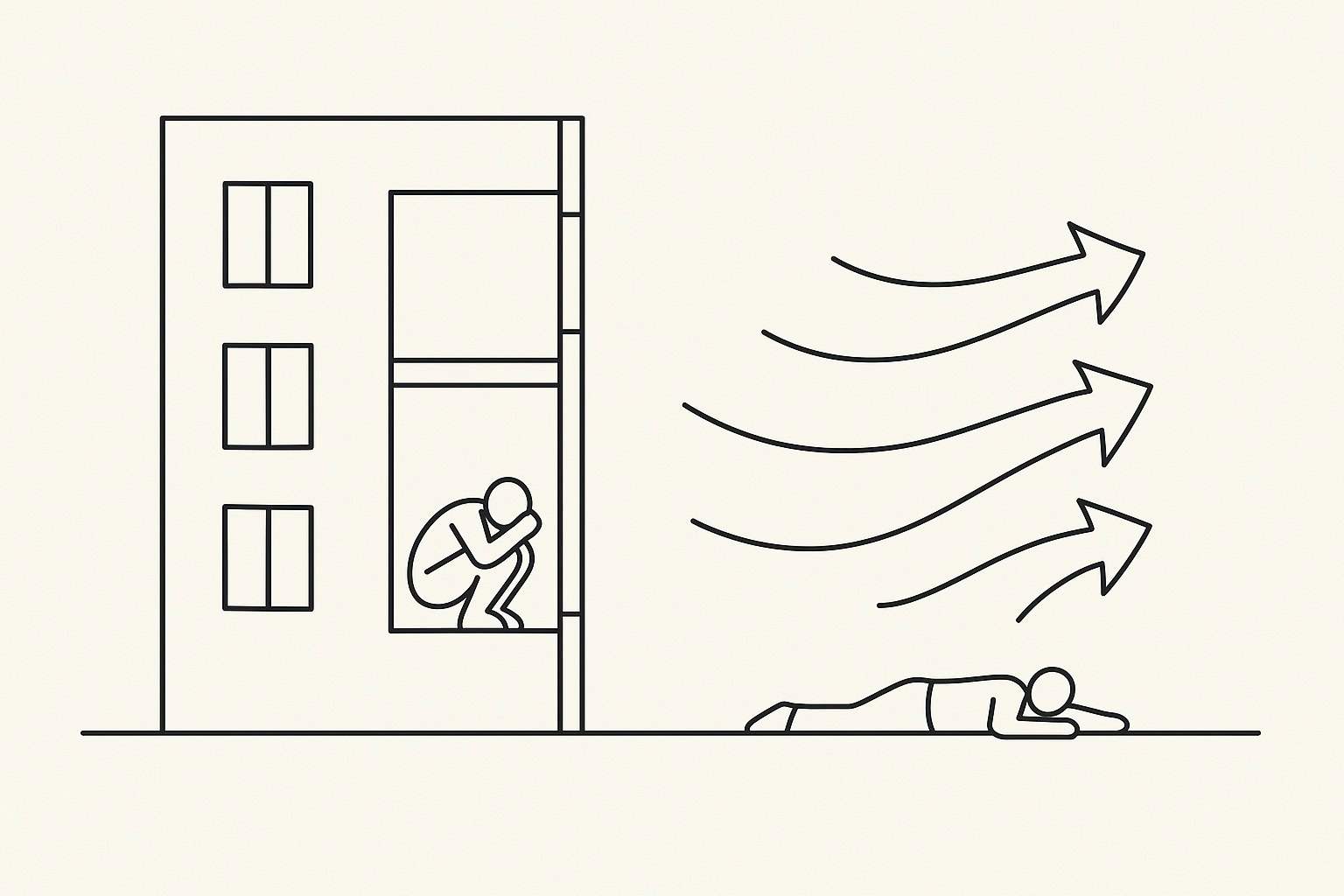

How a shock wave moves through a city
Models of strikes on residential districts show that urban layout directly affects the wave’s force. In open areas, pressure drops with distance, but between high-rises, “corridors” can form, allowing the wave to travel farther than expected.
Facades facing the blast site take the highest load: roofs, load-bearing walls and balconies can collapse. Windows within tens of meters can shatter into dangerous fragments. Some buildings act as shields, absorbing the main impact and reducing the pressure on adjacent structures. Even if the explosion isn’t close, the wave can enter a courtyard or street from an unexpected angle.
Where to take cover indoors
The safest option during an air-raid alert is a proper shelter: a basement, a protective structure or a subway station. If you must remain in an apartment, distance yourself as much as possible from the direct force of the blast.
Rely on the “two-wall rule”: there should be at least two solid walls between you and the outside. The first absorbs most of the force; the second reduces the risk of shrapnel and glass. The best location is an interior room without windows or a hallway that does not face the facade.
If there are no windowless rooms, choose a spot next to an interior wall as far from the windows as possible. Sitting or lying down lowers the body’s exposure to debris. In high-rise buildings, middle floors are relatively safer. Avoid balconies and windows – don’t risk filming the strike. If the structure becomes unstable, shows deformation or begins to collapse, evacuate immediately via the stairs and move a safe distance away.
What to do if an explosion finds you outside?
The main mistake is trying to outrun a shock wave, as it travels faster than a person can run. If you hear a whistle, rumble or see a flash in an open area, act instantly.
Your first goal is to find a solid barrier between you and the blast: a wall of a sturdy building, a concrete fence, a column or an embankment. Even a small protrusion can reduce the wave’s force and shield you from debris.
If no shelter is available, drop to the ground. Lie face-down, ideally with your feet toward the potential explosion. Cover your head with your hands. Keep your mouth open, as this helps equalize internal and external pressure, lowering the risk of eardrum injury. Avoid touching your eyes immediately after the blast due to possible glass or micro-debris. Once the main wave passes, move quickly to a safer location such as an entrance hall or an underpass.
Quick safety checklist:
- Identify shelter in advance. Know where the nearest basement or protective structure is and how long it takes to reach it.
- Indoors during an alert: follow the two-wall rule and stay in an interior room. Keep away from glass.
- Don’t watch the strike. Windows and glass panels become dangerous shards under pressure.
- Don’t use elevators. If there’s a risk of structural damage, use stairs and alert other residents.
- Outside: seek cover. Duck behind a solid object that can absorb part of the wave and debris.
- If no cover is available: drop to the ground, face-down, cover your head and open your mouth.
- After an explosion, don’t rush toward the blast site. There may be secondary detonations, collapses or damaged utilities. First assess the situation, provide aid if needed and wait for rescuers.
Why should you mind the blast wave specifically?
The shock wave is a specific destructive factor that explains why entire neighborhoods lose windows and why structurally intact buildings still suffer internal damage. It spreads without a visible outline, changing direction with every obstacle.
A person cannot influence a missile’s trajectory, but they can control their readiness: respond to alerts, know nearby shelters, automatically step away from windows, and drop to the ground when necessary. Those few seconds between the flash and the arrival of the wave determine whether someone survives an attack. Frontliner will continue to remind the public of these fundamentals as long as air-raid alerts remain part of daily life in Ukraine.
Adapted: Kateryna Saienko
Read more — Where lives are saved: a stabilization point in the Donetsk region
